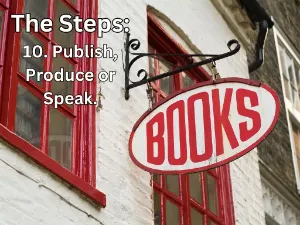Crisis communications response & management services.
By- Mike Branom
The best plan for crisis communications is to not have a crisis at all.
(Side-eye from readers)
Sure, it’s obvious advice — but it’s also great advice. If there’s no mess, there’s nothing to clean up, right?
But that’s not how crisis communications works. If you’re called in, your client is in trouble. And even worse, sometimes factors in play before anything went wrong aggravate the ensuing crisis (not to mention aggravate you, business owner, corporate chief, government agency head, or the PR professional hired to mitigate the damage). The same calamity befalling different clients may result in far disparate consequences, yet not because of a response that was great, poor, or indifferent. Rather, the outcomes may have been steered, if not determined, by the circumstances surrounding the triggering event.
From my years in journalism and as a government communications director, I’ve learned what can sink a crisis response before it can even start. Empowered by this knowledge drop, do what you will, up to and including not taking on the prospective client’s hiring offer. (But if you’re already on staff/retainer, good luck!)
Repeat offender
When starting on a crisis response, it’s important to know how much breathing room is available to you. In some unfortunate cases, the answer is “none” — because the client has screwed up before.
One of the most effective large-scale crisis responses I have witnessed in recent years came from a corporation whose stores in the field were unknowingly releasing harmful products to its customers. Damage was done — lots of damage — but a thorough and transparent effort to make things right resonated with the public enough to keep the company afloat and even start to recover.
But then Chipotle Mexican Grill had another outbreak of norovirus strike one of its restaurants, and now…. Well, gaze upon two recent headlines:
- This fast-casual Mexican chain is cashing in on Chipotle’s struggles — and it already triumphed in one key battle
- People are still terrified to eat at Chipotle — and it’s the chain’s biggest problem
That ain’t good.
History as a bad actor probably is the biggest obstacle to the successful execution of a crisis response. Like an elderly or sick person having a lowered immune system, you may find even a small incident to be fatal. That’s because your client’s first incident cast the narrative, and with every following slip-up the story hardened a little more. And so from the start, little can be done to salvage matters.
This was no accident
The film Fight Club has a famously dark monologue about how automakers decide to recall cars. If the cost of the recall, the narrator states, exceeds the cost of the average cost of a payout to a victim multiplied by the expected number of victims, only then will a recall be ordered.
A real-world example of this corporate amorality comes to us via, fittingly, an automaker. Volkswagen designed its cars to pass emissions tests — but only during testing. In normal use, VW’s cars put out illegal amounts of pollution! On purpose, as the company designed the vehicles that way! See, VW had done the math on the cost of compliance measured against the cost of getting caught — and cheating won. Now, such cold-eyed economics may have made sense on the balance sheet, but that kind of thinking often gets punished worse than when honest mistakes are made.
As seen on TV
Actually, with everyone now looking at a screen of some kind, this can be expanded to include a myriad of devices — but the underlying point remains: Bad visuals can kill a crisis response. Still photographs and moving pictures have been around forever, although technology now means almost everyone can capture images and instantly distribute them across the globe. Which means as soon as oil from the Deepwater Horizon drilling platform disaster began washing ashore — along with dead fish and fowl — the world immediately saw the calamity’s impacts.
Years later, the San Fernando Valley of Los Angeles suffered a similar environmental catastrophe, yet it received only a fraction of the attention as did the oil spill. Why? Because what happened in Porter Ranch was the leak of a gas, invisible to the naked eye — and so there were no arresting pictures to share.
And just as how people record and watch these visuals has grown, so can what be considered a visual. Memes are a recent addition. More on this later.
The Jerk Store called…
…And they’re out of your client.
When you’re presenting in the court of public opinion, it’s always helpful to have a likeable defendant (whether you’re representing an individual or an institution). It means you can get positive testimonials and other shows of support, not to mention the initial reaction of disbelief from people upon hearing your client is in trouble. Goodwill on reserve is a crucial asset — but not one that is out of your control to collect. No, earning high favorables was the work of your client. If you’re fortunate, they’re liked. But just try putting a happy face on, say, Martin Shkreli.
The Germans have a word for a face needing a slap — “backpfeifengesicht” — and, wow, is Shkreli its poster child. You may remember him bursting on the scene in 2015 as “Pharma Bro,” the young hedge fund guy who made himself famous for jacking up the price of a certain pharmaceutical as soon as he got his hands on the manufacturing license. Not only was he unapologetic, he reveled in his newfound notoriety. Yeah, he got charged with securities fraud not long after his introduction to the public, but that wasn’t going to stop him from mugging before cameras as one of America’s Most Hated, buying up the only copy of a Wu-Tang Clan album then refusing to release it, getting kicked off Facebook for general jerkiness, blowing off the news he’d been convicted, and generally acting like a troll right up until the moment a judge decided to revoke his bail after one incident of online harassment too many. After five months-plus in jail awaiting sentencing, he was smacked with seven years in prison — and when the hammer dropped, the nation cheered.
Now, if you were Shkreli’s PR consultant, where would you even start?
Sympathetic victims
Just who was hurt can make or break your crisis response before you can even get started. Consider the hypothetical of your client constructing a shoddy structure, which collapsed. Now imagine these exchanges:
- Were there victims? “None.”
- Were there victims? “Nuns.”
(And if the building fell down on Shkreli, pitch your client as a hero America needs in these turbulent times.)
If you are facing victims who tug at the public’s heartstrings, there’s not much advice you can offer to give except to not further hurt them with an aggressive defense. And, if your client can, throw money at the aggrieved.
Victims who can fight back
The traumatized students who survived the shooting at their school in Parkland, FL, were sympathetic, of course. How could they not be? But when they began using their platform to lobby against gun violence, they made enemies. These enemies attacked — and then America learned these kids were freaking NINJAS with social media. Conservative commentator Laura Ingraham taunted one student, David Hogg, about not getting accepted into the universities of his choice, so he fought back through the noble tradition of one dollar, one vote, calling for a boycott of her show’s advertisers. Hogg’s message went out to his social-media followers, many of whom then turned around an amplified his worse. Within days, sponsors fled in droves.
This is where memes come in. Twitter is most effective when few words carry a huge weight. Or, in place of words, a simple photo or GIF. You may have crafted what you think is a perfect reply for social media, only to have it completely ethered by a wiseass posting a pic of Spongebob Squarepants with your words mockingly quoted back iN A wEiRd mIx oF uPpErCaSe aNd lOwErCaSe lEtTErS. For whatever reason, this meme is carries a staggering punch. Now, multiply this meme by the countless others resonating with the public on social media, and you’ll see how these act as a leveler in disparities of size and power.
What does this mean for crisis communications? With technology giving a megaphone to people who were once voiceless, the lesson you should take away is that your client may be on the defensive far sooner than expected. And once that initiative is lost, it’s difficult to get it back.
Let Ghostwriters Central handle your crisis response
If you’ve fund yourself in a jam and need someone to guide you out, Ghostwriters Central has experts in crisis communications on staff.
Pricing information for press releases and crisis communications consulting and management can be found on our ghostwriting rates page.
Experienced pro writers available on a wide variety of subjects for books, screenplays, speeches, etc.
[/vcex_icon_box]
We also accept payment via PayPal. In the case of large projects, we can work out payment plans,
[/vcex_icon_box]
Headquartered in the Los Angeles, CA, area but helping clients everywhere with the best possible service.
[/vcex_icon_box]












